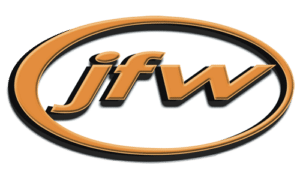Frequently Asked Questions (FAQ) for Fixed Attenuators
1) What would be the part number for a 50F-XXX that had 20 dB of attenuation and SMA connectors?
Replace the XXX with the attenuation value, and add the connector type to the end to get a complete number. For example: 50F-020 SMA 50F-003 BNC 50F-010 N
2) Are fixed attenuators bi-directional?
All of JFW’s parts are bi-directional unless specified differently on the outline drawing or specification sheet. Uni-directional parts will have the input and output connectors clearly indicated on the unit. Uni-directional designs are often used when dealing with high average power or peak power.
3) Can I get 70 dB of attenuation by cascading a 30 dB & 40 dB attenuator?
Yes, attenuation adds in series.
4) How much does an X dB attenuator reduce the signal level by?
| Attenuation | Power Reduction |
| 1 dB | 20.6% |
| 2 dB | 36.9% |
| 3 dB | 49.9% |
| 4 dB | 60.2% |
| 5 dB | 68.4% |
| 6 dB | 74.9% |
| 10 dB | 90.0% |
| 20 dB | 99.0% |
| 30 dB | 99.9% |
5) How much attenuation do I need to pad down VSWR from X:1 to 1.2:1?
| Numbers are theoretical based on ideal parts | |
| 3.0:1 to 1.2:1 | 7.4 dB |
| 2.0:1 to 1.2:1 | 5.6 dB |
| 1.8:1 to 1.2:1 | 5.0 dB |
| 1.5:1 to 1.2:1 | 3.4 dB |
| 1.3:1 to 1.2:1 | 1.6 dB |
6) What are the maximum pulse width and duty cycle for a unit that is rated @ 1000 W peak power?
If no pulse width is specified, then 1 microsecond pulse width is assumed. To calculate the duty cycle, divide the average power rating of the unit by the peak power. For example, if a part is rated at 10 W average power and 1000 W peak power, the duty cycle would be (10/1000) = 1%.
7) Do you have low-intermod parts available?
We do design and manufacture low intermod units. Contact the factory with your specific requirement.
8) Are mixed RF connectors available?
Most units are designed to accept N, SMA, TNC and BNC (male or female) connectors on either end. Having different connectors on each end of a unit will typically not increase the price (the exceptions being 7/16 and RP-TNC). Contact the factory with your specific requirement.
9) Do you use stainless steel connectors?
Most units we sell use nickel-plated brass connectors. Stainless steel connectors are an option on some units. Contact the factory if you require stainless steel connectors.
10) Are your attenuators based on Pi-pad or T-pad designs?
We use both layouts depending on the design parameters of the unit. Factors which can affect this choice include dB value, power handling, peak power handling and frequency range.
